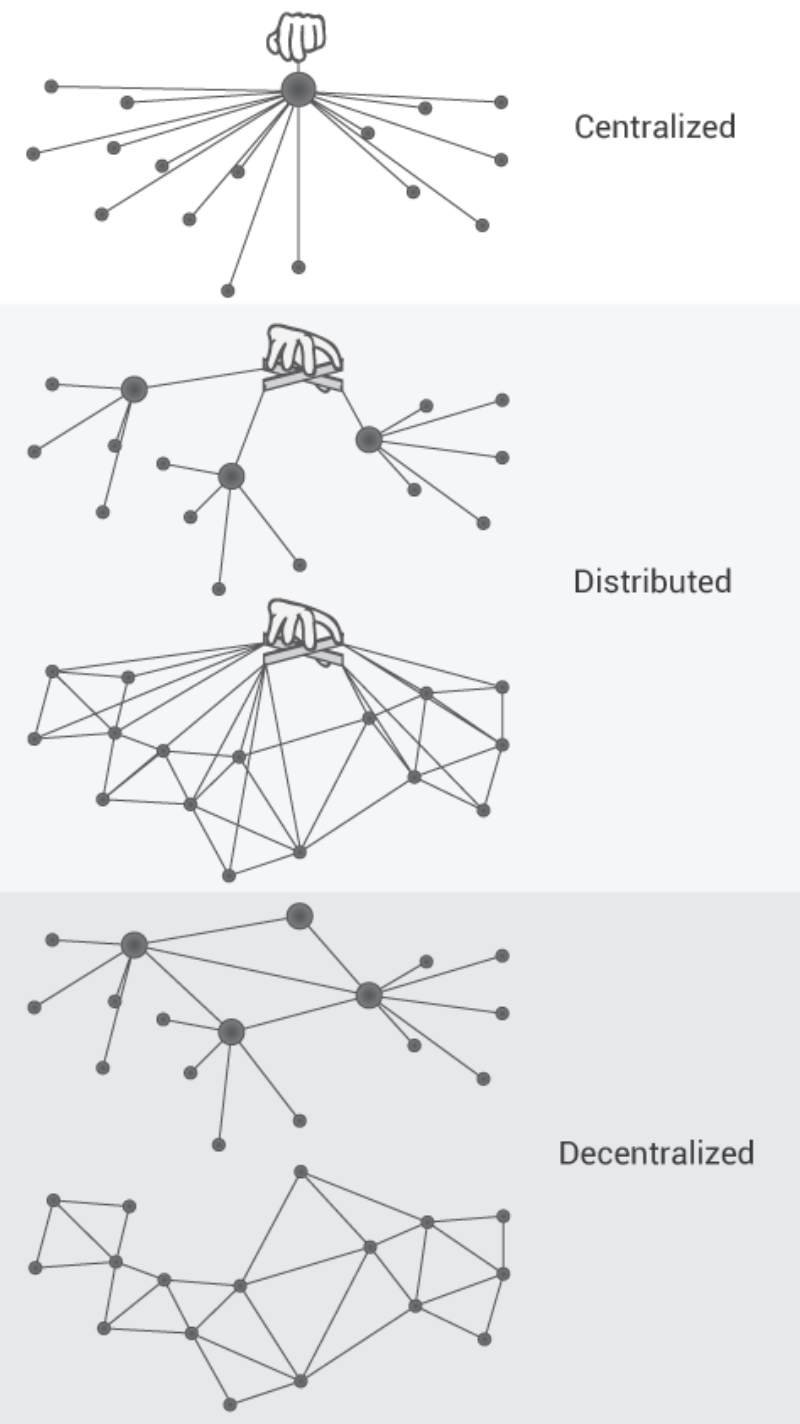“Decentralization” is one of the words that is used in the
cryptoeconomics space the most frequently, and is often even viewed as
a blockchain’s entire raison d’être, but it is also one of the words
that is perhaps defined the most poorly.
– Vitalik Buterin Feb 6, 2017 https://medium.com/@VitalikButerin/the-meaning-of-decentralization-a0c92b76a274
I will summaries his point below, and expand some other aspect.
First, network diagrams are unhelpful in the blockchain context, but unfortunately all too common.
There are actually three separate axes of centralization/decentralization:
- Architectural (de)centralization — how many physical computers is a
system made up of? How many of those computers can it tolerate
breaking down at any single time?
- Political (de)centralization — how many individuals or organizations ultimately control the computers that the system is
made up of?
- Logical (de)centralization— does the interface and data structures that the system presents and maintains look more like a
single monolithic object, or an amorphous swarm? One simple heuristic
is: if you cut the system in half, including both providers and
users, will both halves continue to fully operate as independent
units?

Many times when people talk about the virtues of a blockchain, they describe the convenience benefits of having “one central database”; that centralization is logical centralization. Other have stated the benefit of logical decentralisation http://scuttlebot.io/more/articles/design-challenge-avoid-centralization-and-singletons.html
In computerized systems, architectural but not political decentralization might happen if there is an online community which uses a centralized forum for convenience, but where there is a widely agreed social contract that if the owners of the forum act maliciously then everyone will move to a different forum
Three reasons for Decentralization
- Fault tolerance
- Attack resistance
- Collusion resistance
All three arguments lead to some interesting and different conclusions once you start thinking about protocol decisions with the three individual perspectives in mind. Vitalik expand on this in https://medium.com/@VitalikButerin/the-meaning-of-decentralization-a0c92b76a274
Regarding political decentralisation it seems that there is a myth of complete decentralisation. Centralisation will always prevail around expert opinion. Thus, the lack of transparency of who said what and when, scattered around various social media channels, creates additional information asymmetries that might inadvertently lead to moral hazard.




